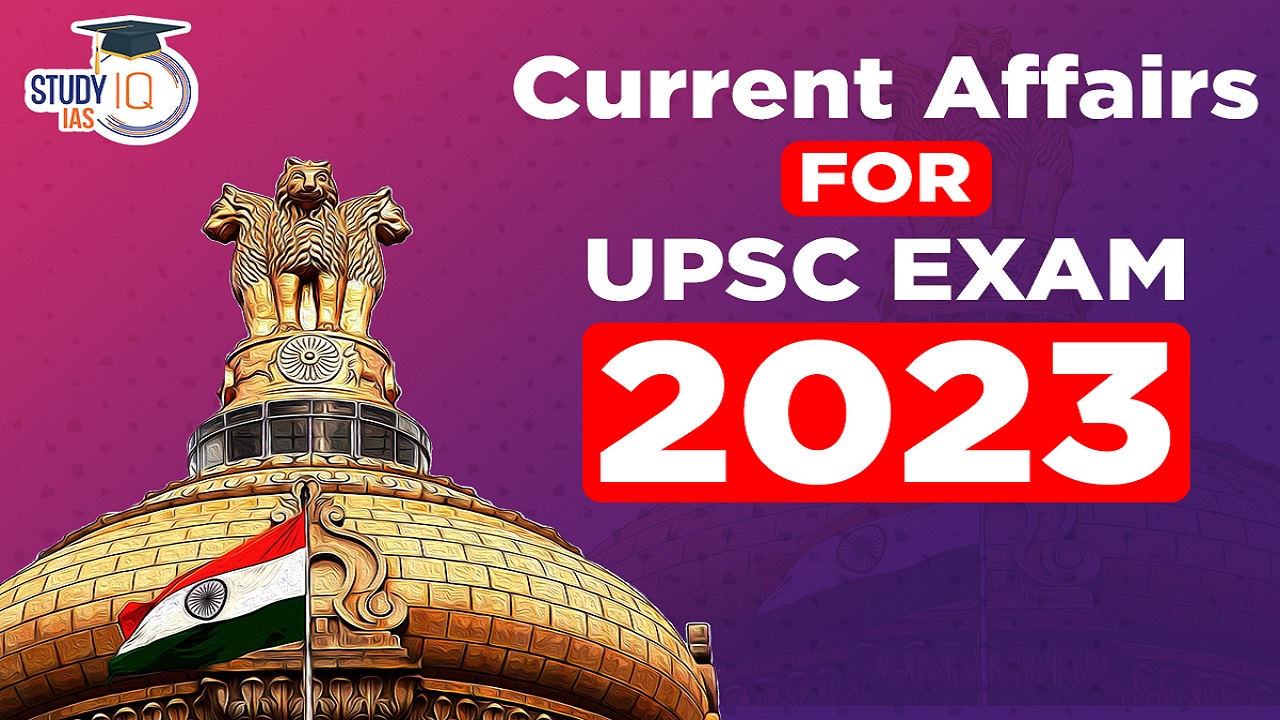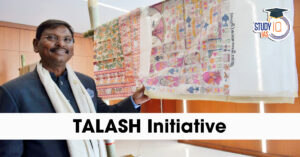Current Affairs 7th September 2023 for UPSC Prelims Exam
Central Drugs Standard Control Organisation (CDSO)
Context: The Central Drugs Standard Control Organisation (CDSCO) has alerted healthcare professionals, consumers, patients, wholesalers, distributors, and regulatory authorities to the voluntary recall of the antacid syrup Digene Gel, manufactured by Abbott India at its Goa facility.
About the Central Drugs Standard Control Organisation (CDSCO)
- The Central Drugs Standard Control Organization (CDSCO) is the Central Drug Authority for discharging functions assigned to the Central Government under the Drugs and Cosmetics Act 1940.
- It works under the Ministry of Health & Family Welfare.
- Drugs Controller General of India (DCGI) is the head of the CDSCO.
- Headquarters: New Delhi. CDSCO has six zonal offices, four sub-zonal offices, 13 port offices and seven laboratories under its control.
- Under the Drugs and Cosmetics Act, CDSCO is responsible for,
- Approval of New Drugs;
- Conduct of Clinical Trials;
- Laying down the standards for Drugs;
- Control over the quality of imported Drugs in the country;
- Coordination of the activities of State Drug Control Organizations.
- CDSCO, along with state regulators, is jointly responsible for the grant of licenses of certain specialized categories of critical Drugs such as blood and blood products, I. V. Fluids, Vaccine and Sera.
About Antacids
- Antacids are medications that help relieve symptoms of heartburn, indigestion, and acid reflux by neutralizing excess stomach acid.
- The action of antacid is a neutralization reaction: Acid + Base → Salt + Water.
- They contain ingredients such as aluminium, calcium, magnesium, or sodium bicarbonate which act as bases (alkalis) to counteract stomach acid and make its pH more neutral.
Current Affairs 6th September 2023 for UPSC Prelims Exam
Build Operate Transfer (BOT) Model
Context: It is being said that the National Highways Authority of India and other road-building agencies should look at reviving Build Operate Transfer (BOT) model by putting up projects costing less than Rs 1,000 crore for award through this route.
About Build Operate Transfer (BOT) Model
- Definition: A build-operate-transfer (BOT) contract is a model used to finance large projects, typically infrastructure projects developed through public-private partnerships.
- The BOT scheme refers to the initial concession by a public entity such as a local government to a private firm to both build and operate the project in question.
- After a set time frame, typically two or three decades, control of the project is returned to the public entity.

- Difference Between BOT and PPP: A public-private partnership (PPP) is when a private entity takes over, finances, and operates large-scale government projects, such as public transportation networks, parks, and hospitals. A BOT contract is just one of a series of potential PPP agreements.
- Advantages of BOT:
- Promotes partnerships between private companies (contributes by bringing technology and innovation) and governments (provides incentives for the private sector to deliver projects on time and within budget).
- It provides advantages to both parties by improving the operational efficiency of providing public services and creating economic diversification.
- Disadvantages of BOT model:
- Private partners may face special risks such as the construction risks (due to time and cost overrun), availability risk (if promised services cannot be provided), demand risk (when there are fewer users than expected for the service or infrastructure).
- Partnerships may shield the private players from accountability to the public, offering bad service or even violating people’s civil or constitutional rights.
- The private partner may be in a position to raise tolls, tariffs and fees for consumers who may be compelled to pay for their services by legislation. This will lead to monopoly of private entities.
- This may facilitate corrupt dealings, pay-offs to political cronies and general rent-seeking activity.
- Other Models:
| Engineering, Procurement and Construction (EPC) Model | Hybrid Annuity Model (HAM) |
|
|
|
|
|
|
|
|
Adopt a Heritage 2.0 Programme
Context: The Archaeological Survey of India has recently launched “Adopt a Heritage 2.0” programme.
About Adopt a Heritage 2.0 Programme
- Definition: It seeks to invite corporate stakeholders to enhance amenities at monuments by utilising their CSR funds.
- Features:
- It is a revamped version of the earlier scheme launched in 2017.
- It clearly defines the amenities sought for different monuments as per the Ancient Monuments and Archaeological Sites and Remains Act (AMASR Act) 1958.
- Interested stakeholders will be able to adopt a monument or specific amenities through a dedicated web portal at Indian heritage.gov.in.
- The portal will provide them with comprehensive details about the monuments that are available for adoption, including gap analysis and estimated financial requirements.
- Process of Selection:
- The process for selection will be carried out after due diligence and discussions with various stakeholders and assessing the economic and developmental opportunities at each monument.
- The selected stakeholders will develop, provide and or maintain amenities in hygiene, accessibility, safety and knowledge categories.
- In doing so, they will get an opportunity to be recognised as a responsible and heritage-friendly entity.
- Time Period: The term of the appointment will be for a period of five years initially, which may be further extended up to five years.
- Indian Heritage App:
- It is a user-friendly mobile app which will showcase heritage monuments.
- The app will feature state-wise details of monuments along with photographs, a list of public amenities available, a geo-tagged location and a feedback mechanism for citizens.
- The launch will be in a phased manner, with ticketed monuments launched in Phase I, followed by the remaining monuments.
One Hour Trade Settlement
Context: Securities and Exchange Board of India (SEBI), which had announced that it was working to launch real-time settlement of trades, is now planning to implement one-hour settlement of trades first.
What is Trade Settlement?
- Settlement is a two-way process which involves the transfer of funds and securities on the settlement date.
- A trade settlement is said to be complete once purchased securities of a listed company are delivered to the buyer and the seller gets the money.
- The current cycle of T+1 means trade-related settlements happen within a day, or 24 hours of the actual transactions.
- The migration to the T+1 cycle came into effect in January 2023.
- India became the second country in the world to start the T+1 settlement cycle in top-listed securities after China, bringing in operational efficiency, faster fund remittances, share delivery, and ease for stock market participants.
What is One Hour Trade Settlement?
- In one-hour settlement, if an investor sells a share, the money will be credited to their account in an hour, and the buyer will get the shares in their demat account within an hour.
- A Demat Account or Dematerialised Account provides the facility of holding shares and securities in an electronic format.
- During online trading, shares are bought and held in a Demat Account, thus facilitating easy trade for the users.
- It holds all the investments an individual makes in shares, government securities, exchange-traded funds, bonds and mutual funds in one place.


 TALASH Initiative: Objective, Key Featur...
TALASH Initiative: Objective, Key Featur...
 Custodial Deaths in India, Types, Issues...
Custodial Deaths in India, Types, Issues...
 MPPSC FSO Recruitment Notification 2025 ...
MPPSC FSO Recruitment Notification 2025 ...





















